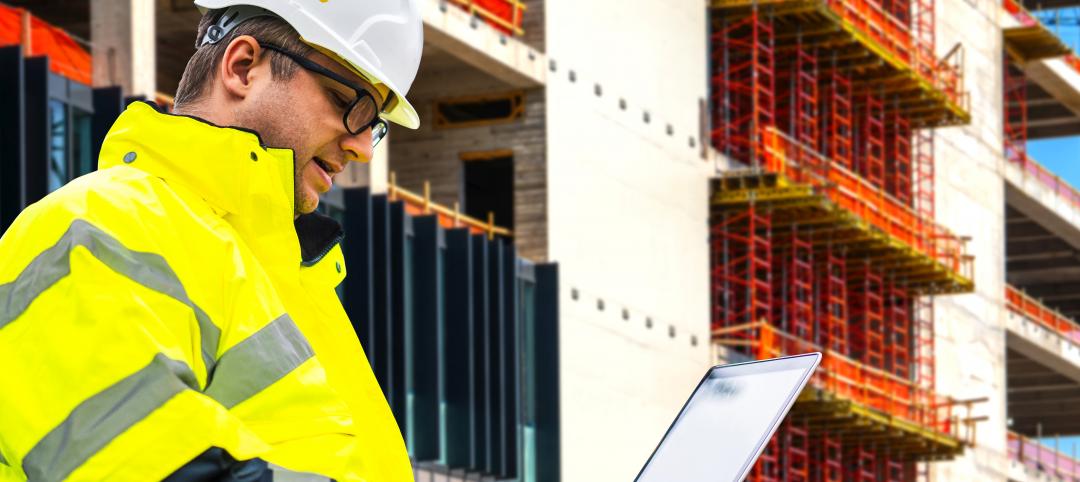SSOE Group, an international engineering, procurement, and construction management firm headquartered in Toledo, Ohio, recently completed the reconstruction of two Ford Motor Co. plants. The key to the project’s success was the use of new laser scanning technology that allowed the SSOE-led Building Team to capture untold millions of data points for integration into the 3D design model, thereby saving the client significant amounts of time and money.
Ford determined the two plants had exceeded their designed lifespans and opted to reconstruct and upgrade them rather than build new. All members of the Building Team—SSOE, laser-scanning vendor Troy Design & Manufacturing, Redford, Mich., Walbridge Construction Co., Detroit, and UK software developer Pointools Ltd.—had prior experience with laser scanning technology on smaller projects. What was daunting about these projects was the sheer size, totaling about 200,000 sf.
“Ford wanted us to work within their ‘as constructed’ environments, meaning we would be designing inside existing structures that needed to be cleared of old equipment,” says Joe Gerweck, project manager for SSOE Group.
Ford also required the Building Team to work with point cloud technology to reduce the number of construction coordination conflicts. To create the data points, the Building Team used a 3D laser scanner to capture the point clouds of existing equipment and construction in the plants.
LET THE TROUBLESHOOTING BEGIN!
Once the Building Team was defined, SSOE was tasked as the model integrator during the bid and construction phases to ensure the proper utilization of the 3D models and laser scans. This involved confirming software compatibility between subcontractors supplying 3D elements and collaborating the design intent, construction models, and laser scans.
Much to the surprise of the Building Team, there were few problems regarding software compatibility between the members of the Building Team.
“As with any new endeavor, there are always compatibility issues that need to be identified and resolved,” says Gerweck, who notes that, because point cloud technology and the supporting software are still in their infancy, there is no standard that exists between the technology vendors. “This limits the compatibility some, but it was not to the detriment of the Ford projects,” he says.
Having sidestepped the software compatibility problem, the next step for the Building Team was to scan the two manufacturing plants. This represented the most critical aspect of the job because these scanned data points would be used to compare and coordinate with new construction designs.
Traditional scanning methods and equipment were utilized for both Ford reconstruction projects. According to Neil Wakeman, SSOE Group’s BIM/CAD technical leader, stationary laser scanners on tripods were strategically mapped to encompass an area depending on the density or detail requested by the design engineers. The resulting data points were then imported into manageable files per building bay. The point clouds were then cleaned up and ultimately became the basic content used to create the reconstruction designs.
Architectural drawings utilized screen shots of the laser scans to identify elements for demolition versus elements that were to be reproduced in CAD. When using CAD, it is up to the user to interpret what they see on the screen, and identify it as a real world object such as a beam or column.
The laser scanning process, from on-site scanning to cleaning and organizing the raw scans into manageable files for the Building Team, was utilized during all phases of construction. This allowed improvements to the construction schedule, preplanning, and final design conducted by the Building Team both in the field and in the office.
LESSONS LEARNED ABOUT WORKING REMOTELY
Following the scans, the data was then integrated within the 3D modeling software, providing the Building Team with both a visual reference and actual reference to locate points in the 3D digital space. The result was the basis of the designs for updating the two Ford facilities. The entire Building Team was able to virtually see the design intent models, fabrication models, and laser scans overlaid in Navisworks for discussion before anything was assembled in the field.
Once the data points from the scans were transferred to the 3D modeling environment, the Building Team now had the capability to measure points and elevations virtually from a remote office during reconstruction. The scans from the Ford facilities were also used to coordinate the new utility layout with the existing utilities for such systems as HVAC, compressed air piping, coolant piping, domestic water piping, steam piping, electrical bus ducts, and electric cable tray. This resulted in a reduction of the number of hours the Building Team spent in the field verifying existing site conditions.
“The laser scanning technology was very effective,” says Gerweck. “During the design phase, it was much more efficient to review the laser scan results than to travel many hours to verify field conditions.”
Although having the laser scans reduced the number of overall trips to the job sites, thereby saving the client money in the long run, some site visits were still unavoidable. “It’s always beneficial for the Building Team to visit the site because there are instances where the laser scan does not fully describe the actual site condition based upon where the tripod was located for the scan,” says Gerweck.
During the laser scanning process, the Building Team learned another valuable lesson—that rescanning the buildings after the manufacturing equipment was removed proved to be much more efficient and accurate than editing the point clouds by hand to reflect the conditions prior to the new design. Wakeman says SSOE will be certain to incorporate this bit of wisdom into future scanning projects.
Perhaps the most important lesson from this case study is that, while the learning curve associated with new technology can be intimidating, once the Building Team is on same page technologically, the result can save a client significant time and money, thus benefiting everyone involved in the project. BD+C
Related Stories
Concrete Technology | Apr 19, 2022
SGH’s Applied Science & Research Center achieves ISO 17025 accreditation for concrete testing procedures
Simpson Gumpertz & Heger’s (SGH) Applied Science & Research Center recently received ISO/IEC17025 accreditation from the American Association for Laboratory Accreditation (A2LA) for several concrete testing methods.
Sponsored | BD+C University Course | Apr 19, 2022
Multi-story building systems and selection criteria
This course outlines the attributes, functions, benefits, limits, and acoustic qualities of composite deck slabs. It reviews the three primary types of composite systems that represent the full range of long-span composite floor systems and examines the criteria for their selection, design, and engineering.
Wood | Apr 13, 2022
Mass timber: Multifamily’s next big building system
Mass timber construction experts offer advice on how to use prefabricated wood systems to help you reach for the heights with your next apartment or condominium project.
AEC Tech | Apr 13, 2022
Morphosis designs EV charging station for automaker Genesis
LA-based design and architecture firm Morphosis has partnered with automotive luxury brand Genesis to bring their signature brand and styling, attention-to-detail, and seamless customer experience to the design of Electric Vehicle Charging (EVC) Stations.
AEC Tech | Apr 13, 2022
A robot automates elevator installation
Schindler—which manufactures and installs elevators, escalators, and moving walkways—has created a robot called R.I.S.E. (robotic installation system for elevators) to help install lifts in high-rise buildings.
Modular Building | Mar 31, 2022
Rick Murdock’s dream multifamily housing factory
Modular housing leader Rick Murdock had a vision: Why not use robotic systems to automate the production of affordable modular housing? Now that vision is a reality.
Building Technology | Feb 28, 2022
BIPV and solar technology is making its mark in the industry
Increasingly, building teams are comparing the use of building-integrated photovoltaic (BIPV) systems for façades, roofs, and other architectural assemblies with a promising and much easier alternative: conventional solar panel arrays, either on their building or off-site, to supplement their resiliency and decarbonization efforts
Sponsored | BD+C University Course | Feb 17, 2022
Metal roofing trends
New ideas in design and constructability are radically changing how metal systems are used as roofing for commercial and institutional buildings. Behind the investment in these new kinds of expressions and construction approaches is a growing interest in improved performance and reduced environmental impact. Metal roofing systems can cut cooling and heating loads significantly, according to the EPA.
M/E/P Systems | Jan 27, 2022
Top 5 building HVAC system problems and how to fix them
When your HVAC system was new, it was designed to keep the indoor environment comfortable, functional, and safe. Over time, that system can drift out of alignment, leading to wasted resources, excessive energy consumption, and reduced occupant comfort.
Sponsored | Voice of the Brand | Jan 27, 2022
A Modern Approach to Labor in the Construction Industry
The COVID-19 pandemic disrupted and reshaped norms in the workforce and the ongoing labor shortage can be felt in every industry. Innovations to go faster, maintain safety, minimize learning curves, and drive down costs are becoming imperatives for companies to stay competitive in the construction industry.
















